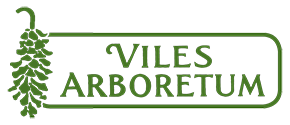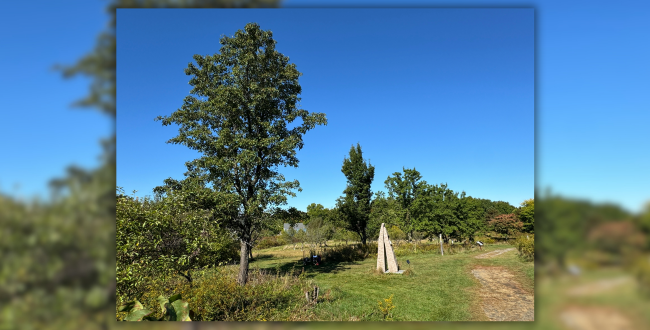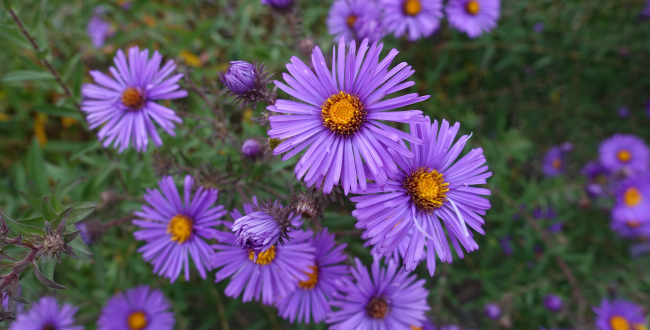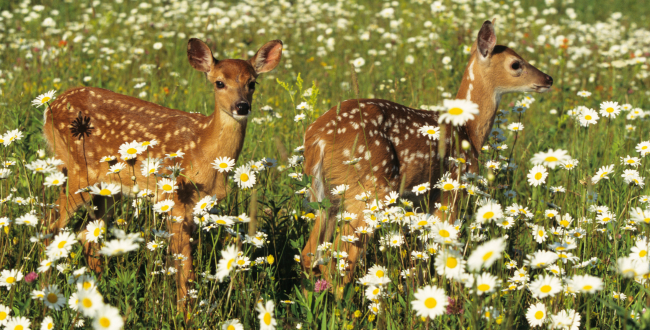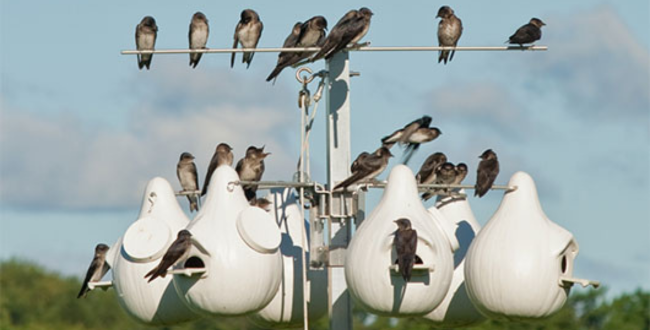Viles Arboretum has been thriving, with busy trails, numerous events, and a bright outlook for the future. As we look ahead to 2024, there are a couple of areas that need attention so this years appeal is focused on two key areas: enhancing trail accessibility and building climate change awareness in our community. These initiatives will ensure that more visitors, regardless of mobility concerns, can fully enjoy the Arboretum, while also deepening our role in educating the community about the critical challenges posed by climate change. This year’s appeal is dedicated to these efforts, helping us create a more inclusive and informed space for everyone who visits. Both projects require significant resources, and we can't do it alone. Together, we can create a place where everyone can learn, grow, and connect with nature.
In the coming weeks, Viles Arboretum will be removing five Callery Pear (Pyrus calleryana) trees from our grounds. These trees, planted in 1986, line the edge of the Heritage Apple Orchard along the Inner Loop. And although their size and presence are striking, these trees have become invasive, outcompeting native species and posing a threat to the local ecosystem. We will be selecting one or more species of native flowering trees to take their place, providing beauty while supporting Maine's natural biodiversity.
We envision the Arboretum to be a place where individuals of all abilities have the opportunity to recreate, explore, and learn about nature. We need your help to get there!
Viles Arboretum is pleased to announce the soft launch of Hortis, an innovative plant accessioning software that will streamline and enhance the management and accessibility of the Arboretum’s diverse plant collections. This new tool marks a significant step forward in our ongoing efforts to preserve and share our living collections with the public.
Join us at Viles Arboretum on August 24th for a crucial volunteer event focused on removing the invasive plant Purple loosestrife (Lythrum salicaria), a striking but problematic plant species poses a significant threat to native plants and wildlife, disrupting the delicate ecosystem balance of our wetlands and habitats across the state. Here’s what you need to know about this perennial herb, its impact on local ecosystems, and strategies for managing its spread.
Secretary of State Shenna Bellows announced the winner of the Maine State Flag Redesign Contest – Adam Lemire of Gardiner – on Monday and unveiled his design which was chosen as the model design for the potential new flag. Lemire says "...the final design is primarily based on an Eastern White Pine in Governor’s Grove at Viles Arboretum...” Viles Arboretum neither supports nor opposes the changing of the state flag. However, as part of our mission is to provide inspirational opportunities through conservation, we are honored that the potential new flag was inspired by our space.
As late summer arrives, Viles Arboretum is showcasing one of its most stunning displays of native flowers. The once-green fields are now coming alive with vibrant golds, purples, and pinks. This colorful transformation not only beautifies the landscape but also supports local pollinators. As you visit the Arboretum this late summer, take in the changing colors and patterns of the native plants. The evolving landscape highlights how well these plants adapt and thrive throughout the seasons. It's a great time to see their beauty and appreciate their role in the ecosystem.
Viles Arboretum has begun the process of creating a quarter-acre wildflower meadow to support monarch butterflies and other native pollinator species. This project is located between the Visitor Center and the Heritage Apple Collection, in the former site of the Community Garden. We'll be planting Eastern columbine, golden alexanders, black-eyed Susan, turtlehead, perennial gaillardia, great blue lobelia, wild bergamot, Culver’s root, spotted Joe-Pye weed, boneset, Maximilian’s sunflower, narrow-leaved mountain mint, and New England aster.
Spanning 224 acres, Viles Arboretum offers a rich habitat for diverse wildlife, making it likely you'll encounter some of these creatures during your visit. To ensure a safe and enjoyable experience for both you and the animals, here are some guidelines on what to do when you come across wildlife.
Viles Arboretum is excited to be partnering with the Maine Department of Inland Fisheries and Wildlife on a Purple Martin conservation project. Starting May 25th, MDIFW will begin the installation of a nesting structure for Purple Martins in one of the fields on the back of the Arboretum property. This will be an important step for Purple Martin conservation efforts in the State of Maine.
